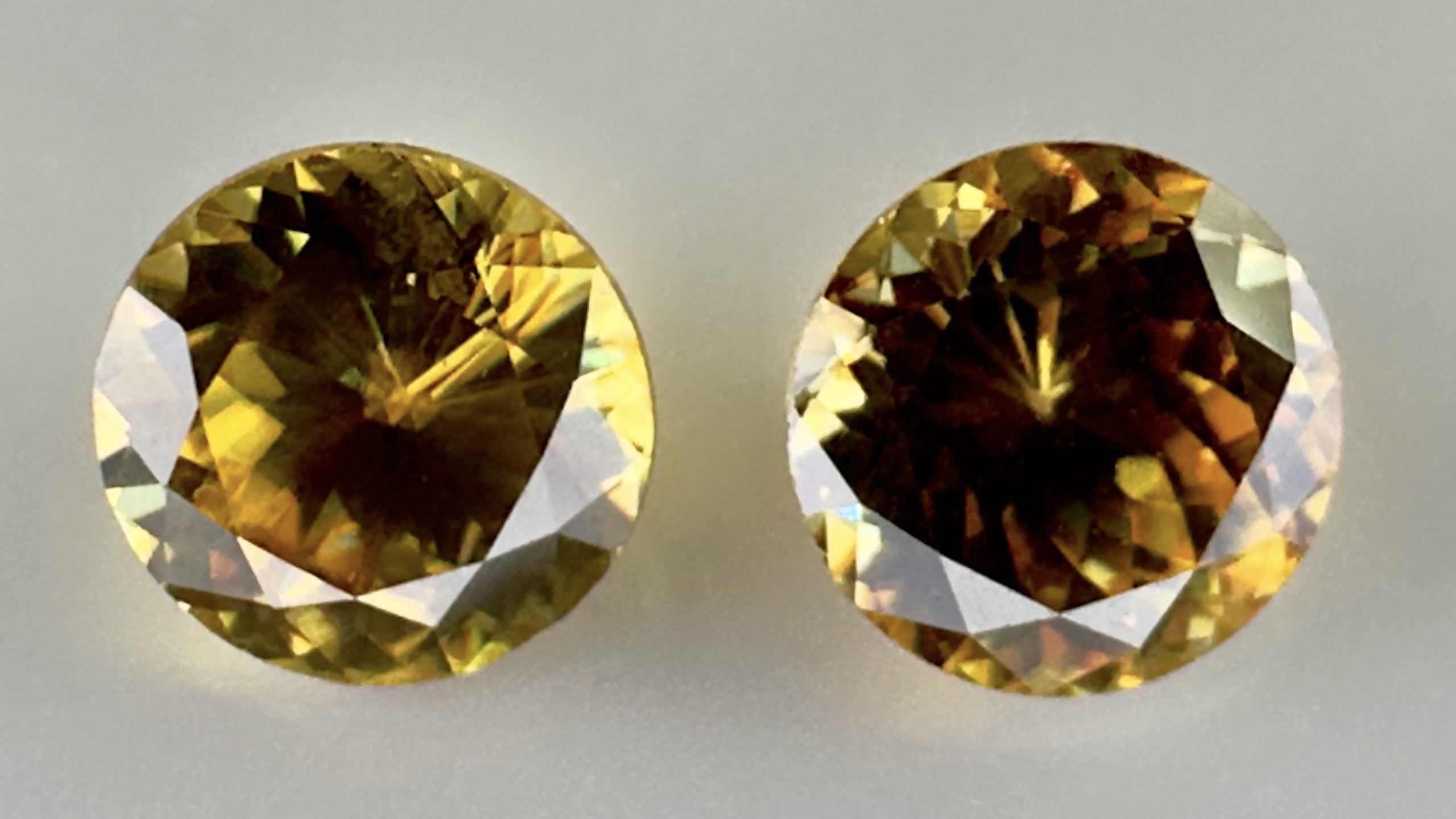The Sphene
Sphene, also called titanite, is a fascinating gemstone with a spectacular play of light and varied colors. Formed in the heart of the Earth, this gemstone is distinguished by its high dispersion which creates exceptional colored flashes, rivaling those of diamond.

Sphene, also known as titanite, is a mineral prized for its remarkable color and brilliance. Its unique composition gives it an intense dispersion of light, surpassing that of diamond, which gives it a “rainbow” appearance when the stone is cut.
The natural hues of sphene vary from green to yellow, through brown and, more rarely, pink. This gemstone, although relatively fragile due to its moderate hardness (about 5-5.5 on the Mohs scale), is particularly appreciated for its exceptional fire and its bright colors that captivate collectors and jewelers.
The main deposits of sphene are located in Pakistan, Brazil, Canada, Austria, and Madagascar. Although there are several sources, sphene remains relatively rare in jewelry, mainly because of its fragility and rarity.

In its natural state, sphene often has inclusions, but these do not detract from its charm and can even accentuate its light dispersion. Unlike other gemstones, sphene is generally not treated, as its color and clarity characteristics are sufficiently attractive in their natural state.
Sphene is a fascinating gemstone, prized by connoisseurs and enthusiasts for its brilliance and reflections. Although its use in jewelry is limited, its rarity and spectacular fire make it a particularly sought-after stone for unique pieces.






Physical properties of sphene:
Each gemstone has unique characteristics, such as color, clarity, and hardness, that influence its brilliance and durability. These properties are the result of the stone's chemical composition and crystal structure, which contribute to its appeal in jewelry and fine jewelry.Here are detailed resources on this topic.
Chemical composition: CaTiSiO₅ (calcium titanium silicate), sometimes with traces of iron, aluminum or other elements.
Hardness: 5 to 5.5 on the Mohs scale, relatively soft compared to other gemstones, making sphene more brittle.
Density: About 3.4 to 3.6 g/cm³.
Crystal system: Monoclinic, with crystals often prismatic and sometimes tabular.
Cleavage: Good distinct cleavage in one direction, making the gem more susceptible to cracking.
Fracture: Conchoidal to uneven, with irregular edges.
Melting index: Sphene melts easily under high heat due to its composition.
Optical properties of sphene:
Transparency: Transparent to translucent.
Refractive Index: High, between 1.843 and 2.110, giving sphene a very brilliant luster.
Dispersion: Exceptionally high (about 0.051), superior even to diamond, resulting in spectacular iridescent effects, often called “fire”.
Birefringence: Very strong (0.100 to 0.160), causing a splitting effect of images through the stone.
Color: Sphene colors range from yellow, green, brown, gray to reddish, depending on the trace elements. Stones rich in iron tend to be darker, while those with fewer impurities are lighter.
Fluorescence: Some varieties may exhibit weak fluorescence under UV light.
Notes on Use:
Because of its softness and distinct cleavage, sphene is less common in jewelry and requires protective settings when used in jewelry.
NEWSLETTER
Subscribe to the newsletter to receive our next wonders.

